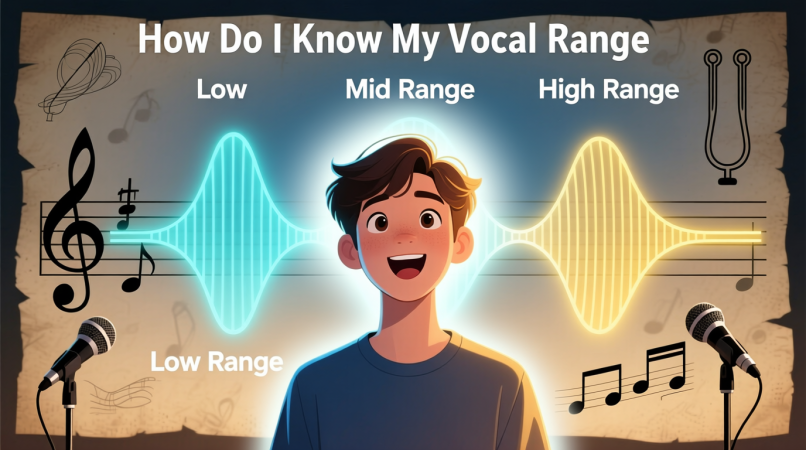
Your vocal range is the span between the lowest note you can sing clearly and the highest note you can sing comfortably. You can figure it out by warming up, testing your voice against a piano or keyboard, and recording your lowest and highest notes.
Why Knowing Your Vocal Range Matters
- It helps you choose songs that match your voice.
- You avoid strain by singing within your comfortable tessitura.
- It gives you a better idea of whether you’re a soprano, alto, tenor, or bass.
- Knowing your range also helps you track progress if you’re training.
Step 1: Warm Up Before Testing
Never test your limits on a cold voice. Start with:
- Humming or lip trills
- Light scales up and down
- Gentle sirens (sliding smoothly from low to high notes)
This keeps your vocal cords relaxed and reduces the chance of strain.
Step 2: Find Your Lowest Note
- On a piano or virtual keyboard, begin at middle C (C4).
- Move down note by note.
- Stop when your voice starts to fade, croak, or lose clarity.
- The last note sung clearly is your lowest note.
Step 3: Find Your Highest Note
- Return to middle C.
- Move upward, singing each note steadily.
- Stop when your voice cracks, strains, or feels pushed.
- The last clean pitch is your highest note.
Step 4: Write Down Your Range
Example: If your lowest note is G3 and your highest note is C6, your range is G3–C6.
Step 5: Compare With Typical Voice Types
| Voice Type | Typical Range (approx.) |
|---|---|
| Soprano | C4 – C6 |
| Mezzo-Soprano | A3 – A5 |
| Alto/Contralto | F3 – E5 |
| Tenor | B2 – A4 |
| Baritone | G2 – G4 |
| Bass | E2 – E4 |
What About Vocal Registers?
Your range includes different registers:
- Chest voice: strong, speaking-like tone
- Head voice: lighter, resonant higher notes
- Falsetto/whistle: extended, airy or piercing notes
- Mixed voice: blend of chest and head, often used in pop singing
Knowing where you switch registers helps you understand your real usable range.
Tools That Make It Easier
- A piano app or digital keyboard.
- A vocal range calculator like Vocal Range Test to automatically measure your lowest and highest notes.
- Recording apps to replay and confirm accuracy.
FAQs
Should I include falsetto in my range?
Yes, but list it separately from your main chest/head voice range.
How many octaves is average?
Most untrained singers have 1.5 to 2 octaves. Trained singers often expand to 3 or more.
Does age affect vocal range?
Yes. Younger singers often have more flexibility, while age can reduce the top end of your range.
How often should I test my range?
Every few months if you’re training. Progress can be gradual.
Which matters more: range or tessitura?
Tessitura—the part you can sing with comfort and beauty—is usually more important than extremes.
